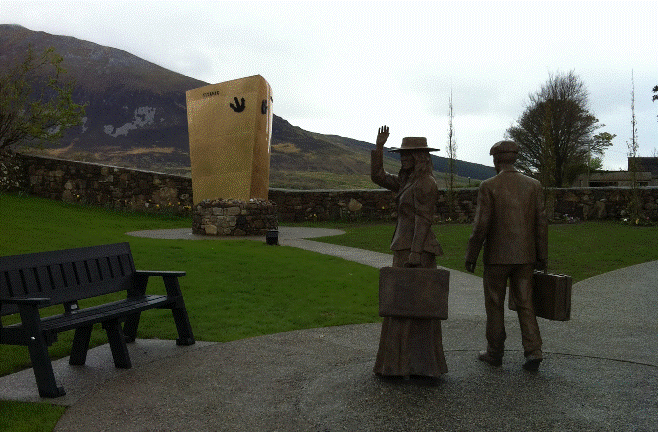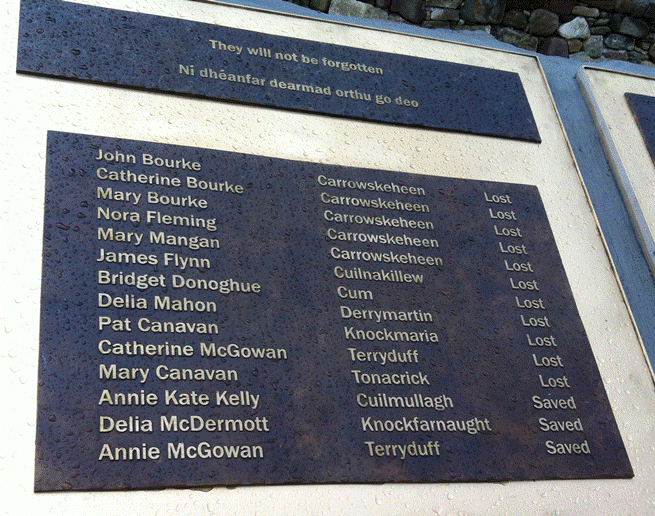A movie to remember
Most publications that provide movie reviews will have published reviews of the new 3D release of James Cameron’s Titanic. But my policy has been not to treat re-releases as new movies simply because they have gone through another round of post-production. Or to re-write reviews I have previously written simply because the movie has had a new release. I have always envisioned this site as a collection of first impressions—at least my first impressions since I started this web site. Not every write-up of a movie on this site marks the first time I have seen that movie, but it does mark the first time I’ve seen it since the 1995 Seattle International Film Festival. (Or during the 1987 Seattle International Film Festival. But now I’m making it too complicated.)
So I’m using this space to record my thoughts of the 3D version of Titanic, which I saw on Sunday. I was dragged by my kid, who has been immersed in all things Titanic in school. The 100-year anniversary of the ship’s sinking was on April 15, and it is a big deal here in Ireland. The Titanic was built in Belfast, and it last docked in County Cork, specifically at Queenstown, which has since reverted to its previous name, Cobh. Closer to us is the village of Laherdane, County Mayo, which holds the distinction in this country of having had the largest number of locals on the ship when it sank (fourteen, of which three were saved).
Something you get a real sense of here (that I didn’t always get in the States, where the Titanic’s sinking always seemed very long ago and very far away) is that there were real people that died horribly in the disaster, and in the grand scheme of things it wasn’t all that long ago that it happened. That is something that Cameron’s movie does very well. It personifies that distanced view of the sinking in the form of Bill Paxton and his crew in the contemporary framing of the story. But through the character of Rose, as played by Gloria Stuart, the events are brought home as having actually happened to real, living people. On the other hand, Cameron nearly undoes this effective device by turning the sinking into some sort of thrill ride à la Indiana Jones.

The Titanic memorial at Laherdane, County Mayo, Ireland

The Addergoole Fourteen, local parishioners who were on the Titanic
Frankly, I was expecting to be disappointed by my re-viewing of Titanic and perhaps regret giving it three of four stars 15 years ago after my first viewing. In the interim, many of its key moments have become fodder for parody. Cameron himself ruined the line “I’m the king of the world!” by shouting it himself when he received his Oscar for directing the movie. I wasn’t expecting what seemed so impressive in 1997 to hold up—especially as my respect for Cameron as a storyteller, which had soared after Terminator, had dimmed after Avatar.
And, to be sure, Titanic is showing its age. The CGI, which was so dazzling a decade and a half ago, now looks to our eyes like animation. This is undoubtedly because we have become more sophisticated about computer animation, as the state of the art has continued to be refined. The retrofitted 3D may have contributed to this as well by emphasizing the various geometrical planes. As far as the writing and performances are concerned, years of familiarity have taken their toll as well. The characters are mostly drawn in black and white. They are either noble and good or totally evil. Cameron’s focus on class distinctions accurately reflect the way things were in 1912, but the film’s moral tone takes on a whole new dimension in light of the filmmaker’s world view as illuminated by Avatar. The irony is that, without a doubt, Cameron saw himself as the Leonardo DiCaprio character, the idealistic artist challenging the dim-witted elites—even though it is clear to everyone that, in the metaphorical ocean voyage of life, Cameron has been traveling in first class for some time.
But now that I’ve got all the sniping out of my system, I have to say it. The movie still works. It is still a masterpiece. Cameron successfully transmits his wonder and awe of the doomed ship, both as technical feat and as cosmic metaphor. And in spite of the ultimately irrelevant central love story and the over-the-top rollercoaster special effects and action sequences, we get a true sense of the human toll of the catastrophe. And it is all extremely powerful. At the time, I took some heat for putting it on my top ten list for 1997 (it is still hanging on in the tenth position), and I am the first to admit that I have come to be embarrassed by certain movies I have gushed over in the past. But Titanic still stands up as a great film. If it has been often parodied or mocked, well, try to think of a great movie that has had a wide cultural impact that hasn’t been fodder for satire.
Does 3D make it better? Maybe not better, but at least more interesting. My kid pronounced that it was the best use of 3D she had seen in a movie. But she was wrong. The right answer, so far at least, would be Martin Scorsese’s Hugo. As has been said before, the thing about 3D is that, just as the human brain can magically convert two-dimensional images into three dimensions, it can also re-adjust the various planes in a three-dimensional image into some kind of normality. But there are a few breath-taking uses of perspective that seemed to be enhanced. And I found myself a few times ducking my head because something seemed to be popping up right in front of my eye. But the most curious effect was during the flooding sequences when water seemed to be spilling over the bottom of the screen and into the auditorium. And, if there is one thing this movie does very well, it is to make you afraid of water.
There are, of course, other movies that have been made about the Titanic. The best of the lot is considered to be Roy Ward Baker’s 1958 docudrama A Night to Remember. It was based on a book by the same name, which was written by Walter Lord and considered to be definitive. It was produced by William MacQuitty who, as a six-year-old boy, had seen the Titanic launched in 1911 in his native Belfast. It starred popular English actor Kenneth More (who would later be known to TV audiences on both sides of the Atlantic as “Young Jolyon” in The Forsyte Saga) as Second Officer Charles Herbert Lightoller. Five years earlier, the story had gotten the lavish Hollywood treatment in Jean Negulesco’s Titanic, which starred Clifton Webb, Barbara Stanwyck and Robert Wagner. Like Cameron’s version, it mixed historical fact with a story about fictional characters.
One could argue about whether Cameron’s version should be considered the best or not. It is surely the most exciting and the most likely to appeal to romantic teenagers. And it has made a massive amount of money since its release. But like Benjamin Guggenheim—who declined to take a space in one of the too few lifeboats and instead sat in his evening wear, smoking cigars and drinking brandy—it deserves to be respected, regardless of its obscene wealth.
-S.L., 24 April 2012
If you would like to respond to this commentary or to anything else on this web site, please send a message to feedback@scottsmovies.com. Messages sent to this address will be considered for publishing on the Feedback Page without attribution. (That means your name, email address or anything else that might identify you won’t be included.) Messages published will be at my discretion and subject to editing. But I promise not to leave something out just because it’s unflattering.
If you would like to send me a message but not have it considered for publishing, you can send it to scott@scottsmovies.com.














